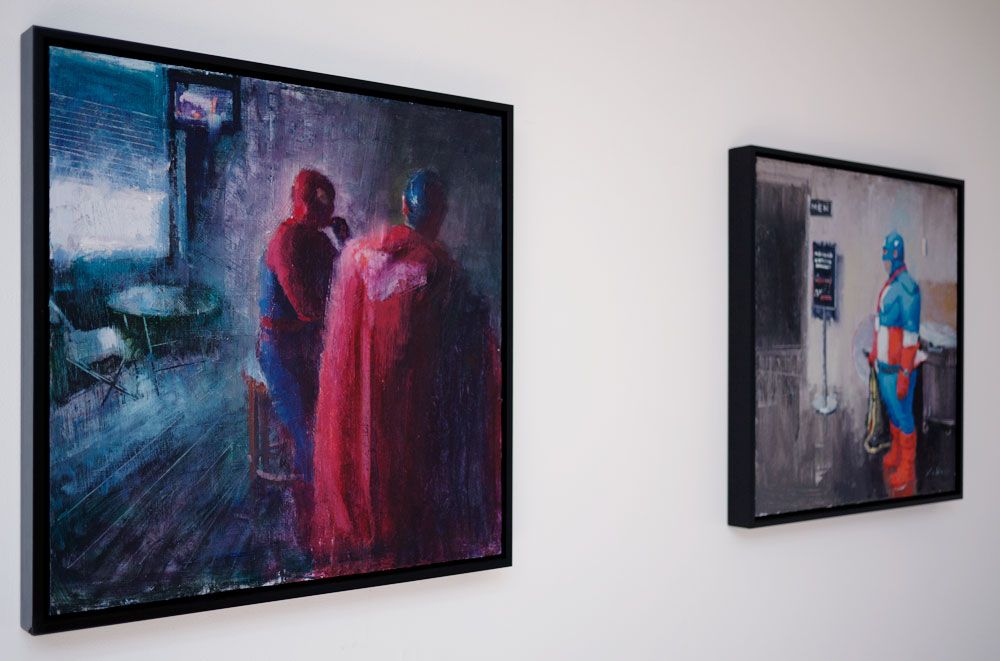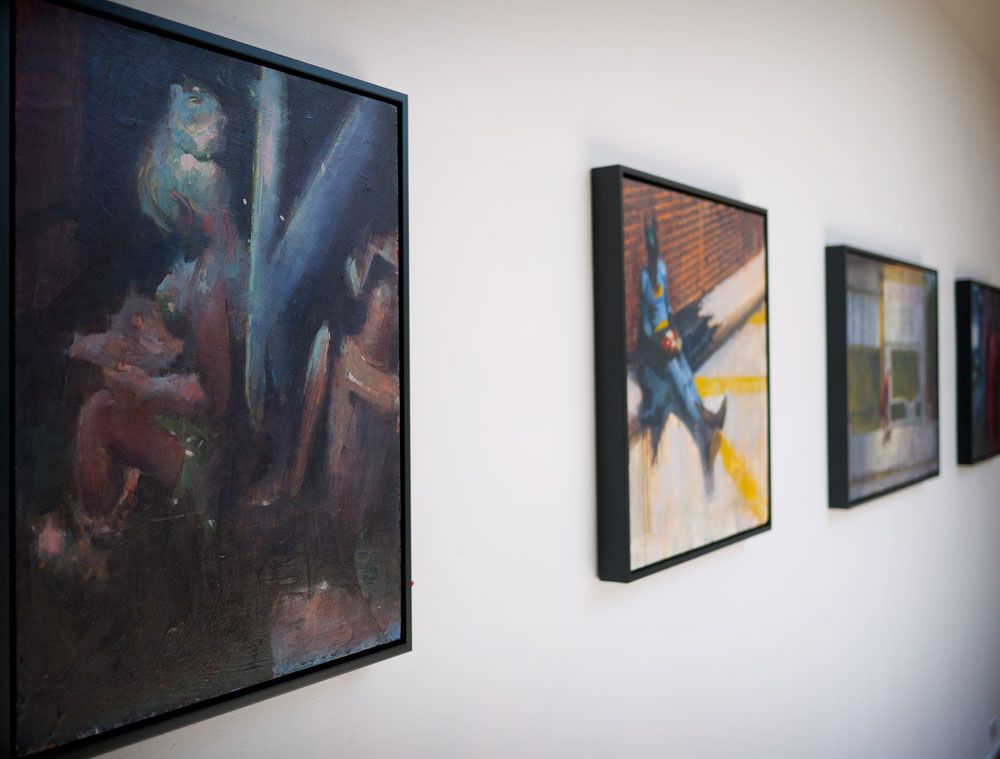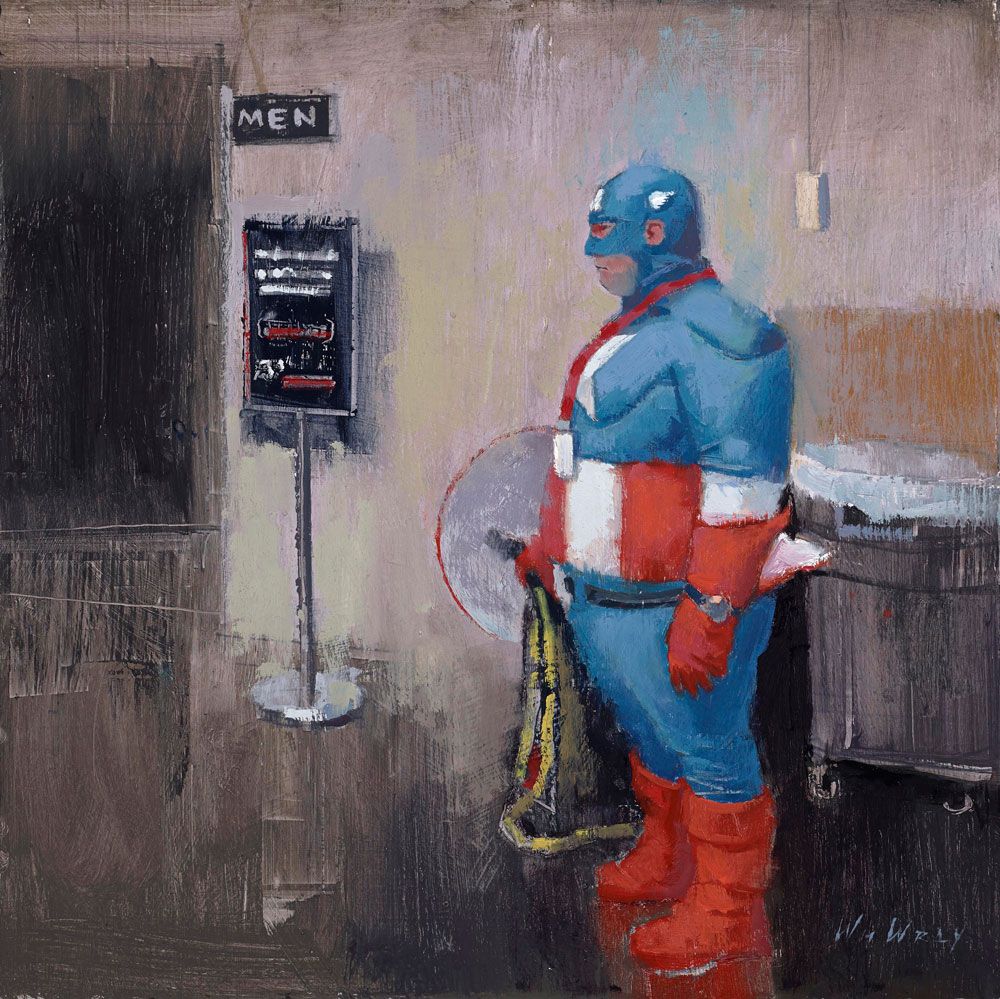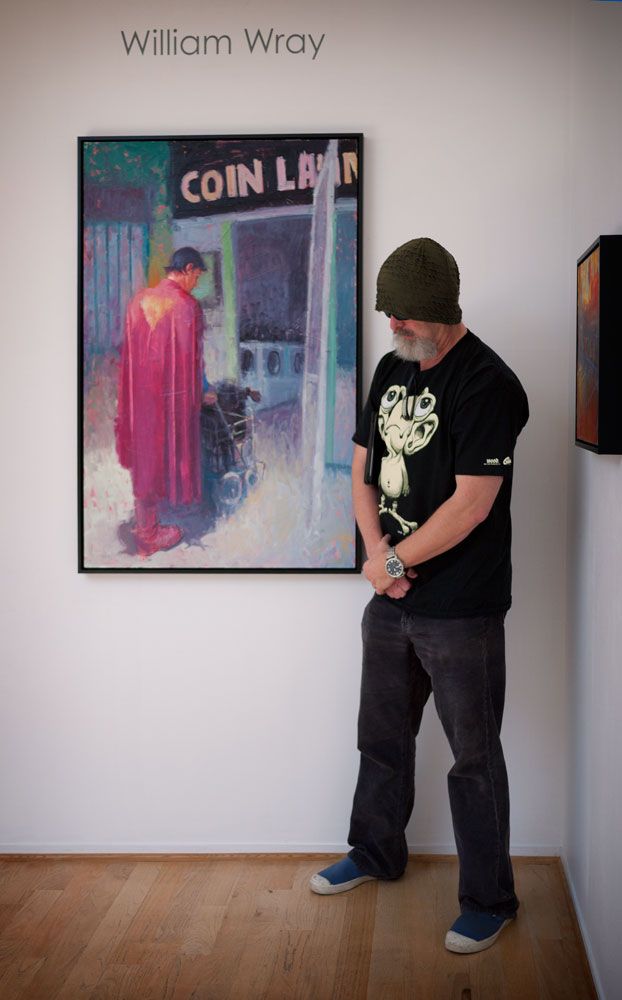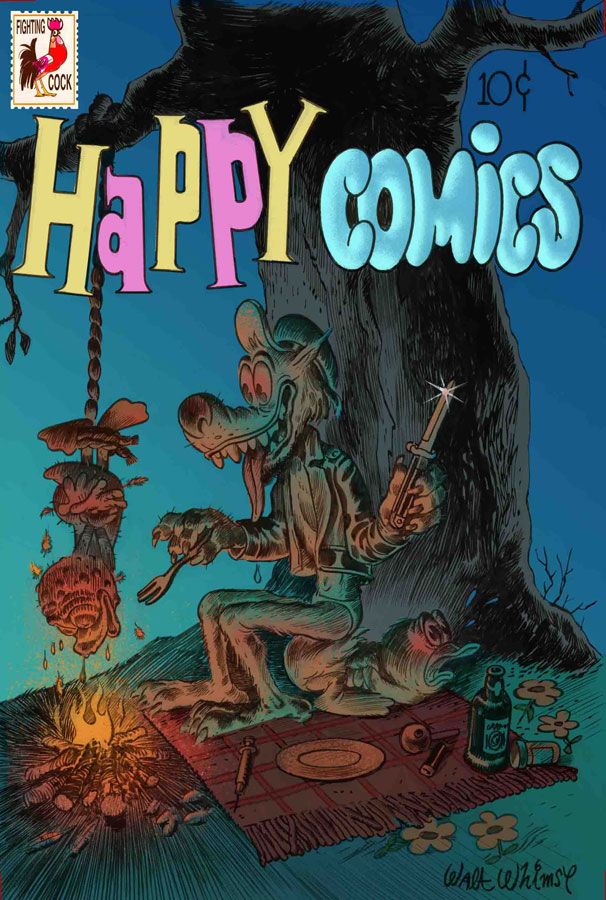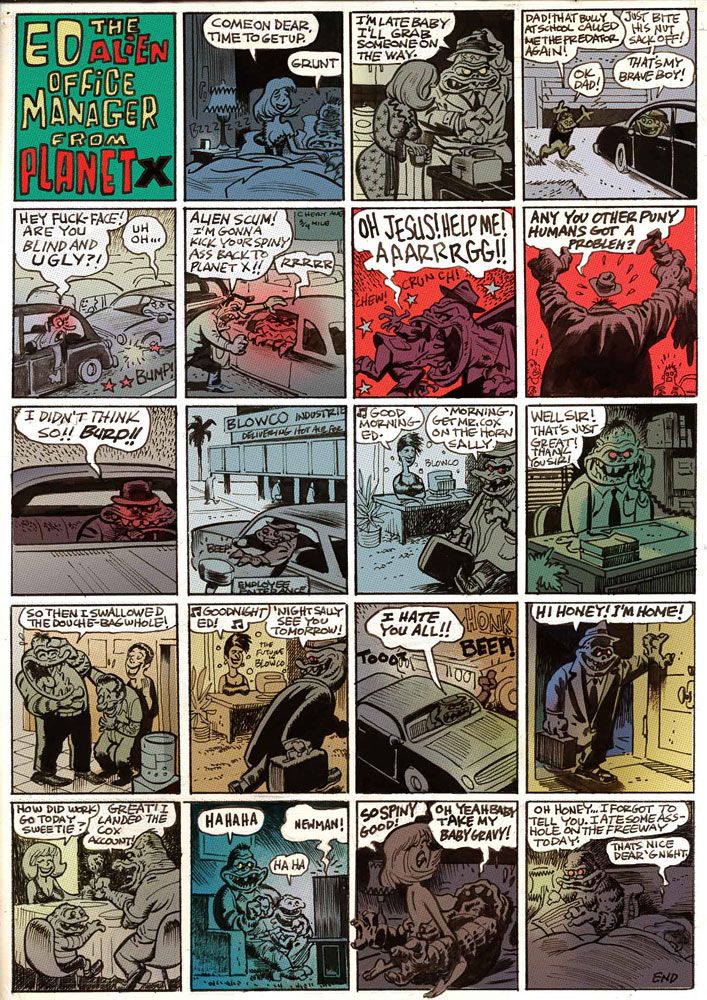Last week I went to see the opening of an exhibition of William Wray’s paintings. Having a passing acquaintance with his wild cartoon style I wasn’t sure what to expect, and the last thing I anticipated was a deeply touching commentary on the human condition through the medium of the California landscape and popular American superheroes.
William Wray’s paints portraits of superheroes in the context of the real world. They are heartbreakingly human, depicted in simple moments looking lost, alone, and bone-tired. Whether slouched in a corner or simply walking down a dilapidated street, Wray's superheroes are anything but super, their bright suits standing out garishly against the faded colors of their surroundings. His perverse sense of humor and affection for the subject matter allows Wray to depict this pathos without it becoming unbearable to look at, it is as if he has taken the sting out of the reality he is forcing us to acknowledge.
The career path of William Wray is surprisingly diverse, within the confines of the creative visual arts. After ten years at Mad Magazine (where he consistently worked to push the envelope), his versatile artistic skills and twisted sense of humor enabled him to create memorable works for cartoons and comic books. His characteristic style can be seen on the Ren & Stimpy Show, Dark Horse Comics, IDW, Disney, Hanna-Barbera, and Filmation.
Wray explained that in making the gradual move from creating comic book art to oil paintings and fine art, he found the superhero concept interesting but was always seeking a new way to examine it, something different from the ubiquitous pop art of the last century. Ultimately he found inspiration within his own candid cosplay photography, by capturing simple, awkward moments at conventions and interpreting them through the lens of his unruly, wildly expressive, neoimpressionist style.
Telling the story of a Captain America-type figure in a painting called Sentinel of Liberty:
"I’m always photographing guys like that and he was just standing there, but as soon as he saw me about to take a picture he went into his ‘Captain America pose’, and I said ’NO!’… I want you to go in to the pose you were in before’… and he didn’t know what I meant because he wasn’t in a pose, he was just standing there, waiting for someone to come out of the bathroom and thinking about dinner or whatever... So he went back into this ‘pose’ and I could tell that he was confused and unhappy, I kind of stole his fantasy in that moment.”
As well as his convention photography, Wray works with costumed performers like Christopher Dennis, (who dresses as Superman on the Hollywood Walk of Fame, as can be seen in the documentary Confessions of a Superhero) and adult film stars which has enabled him to create a unique atmosphere. Some of his paintings of superheroes are couched within the context of “lost” California environments, like the East LA, Hollywood bars, and the Los Angeles Brewery. At times the characters dominate their environment but often they are simply one more element of a long-forgotten fading city facade.
Over his largest pseudo-Superman piece, Wray discussed technique:
"It’s always a struggle to make it rougher, I used to really be obsessed with broken color, I was painting like an updated version of the Impressionist and uh... I got over that. I really wanted this to seem like an old fashioned portrait, like it was done back in the day by an old-fashioned illustrator, so that style came back a little bit more with this one. The ones I like the best are where it’s just the initial underpainting and I haven’t painted over it, it’s just that first, rough pass. Those are the best ones."
It’s true that there is an Impressionist aspect to the softness with which Wray observes light, but overall there’s a strongly Expressionistic element to his work. The rough, choppiness of his textures seems to give voice to the sadness of these super heroic characters forced to exist within the chaos of our world. From an artistic sense, depicting human frailty and beauty isn’t an entirely new trick. But the revelation Wray offers us isn’t just his accomplished technique, but also the benefit of his unique vision. He shows us the reality of our society by depicting superheroes at their lowest ebb, as Wray states about the paintings; "They represent the failure of the American Dream, what we’re going through right now, this fight to protect the illusion of the American Dream is more important than reality." The subjects of Wray’s paintings are perfect a metaphors for our lives, for everything we experience as tiny, insignificant humans in a dirty, entropic world. He sees the beauty in our most tawdry, decayed urban landscapes, just as he sees the frail pathos inherent in our most powerful pop icons of heroism.
Up next for Wray is his first book of cartoons in nearly a decade; Happy Comics. Each of the 4 issue series of 48 page books of with his own creations, completely unedited and unrated. As Wray described it, they are "Short stories that are the uncovering of my dirty id... It’s my cartoon style with a realistic rendering. This thing is so adult and so dark and there so many horrible, violent themes, but all done in my wacky kind of humor, which softens it. I could never draw this for real, it would never be funny, but somehow when you’re doing this to a Disney-type duck it’s more forgiving."
Wray’s paintings will be on display at LAunch Gallery in Los Angeles until the 26th of July.
The 48 page, full-color hardcover book of Wray’s superhero portraits and urban landscape paintings will be published by 3A, and the first 48 page issue of his comic book Happy Comics will be published by IDW.

